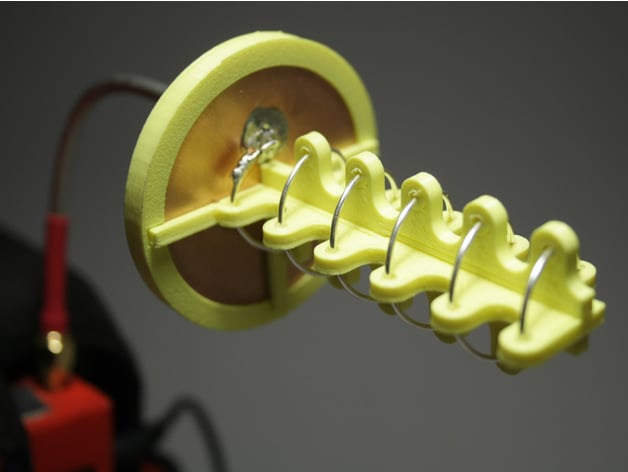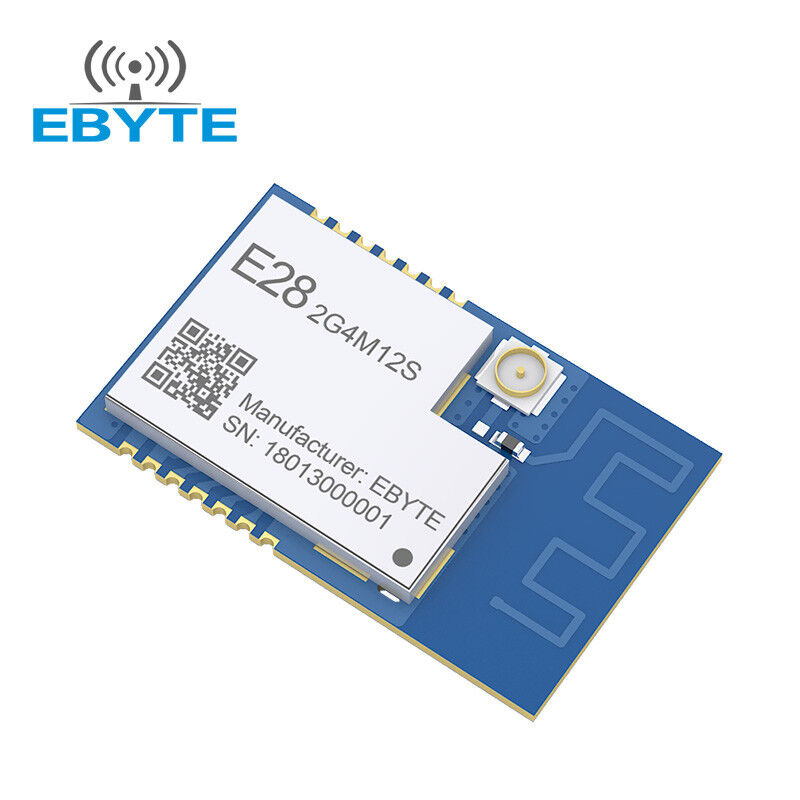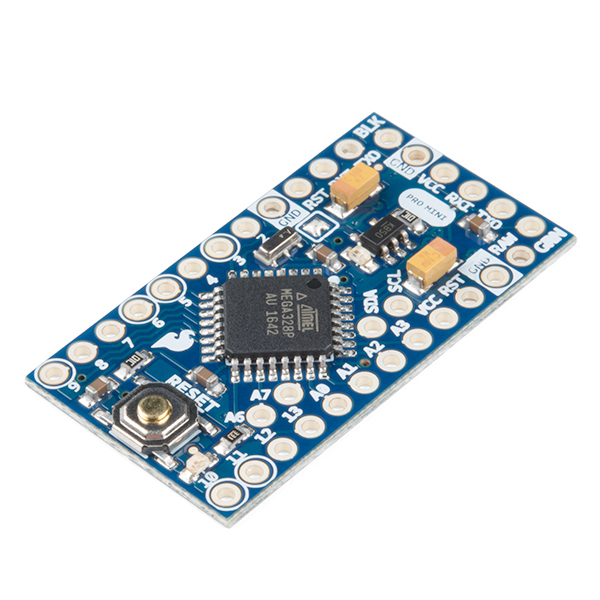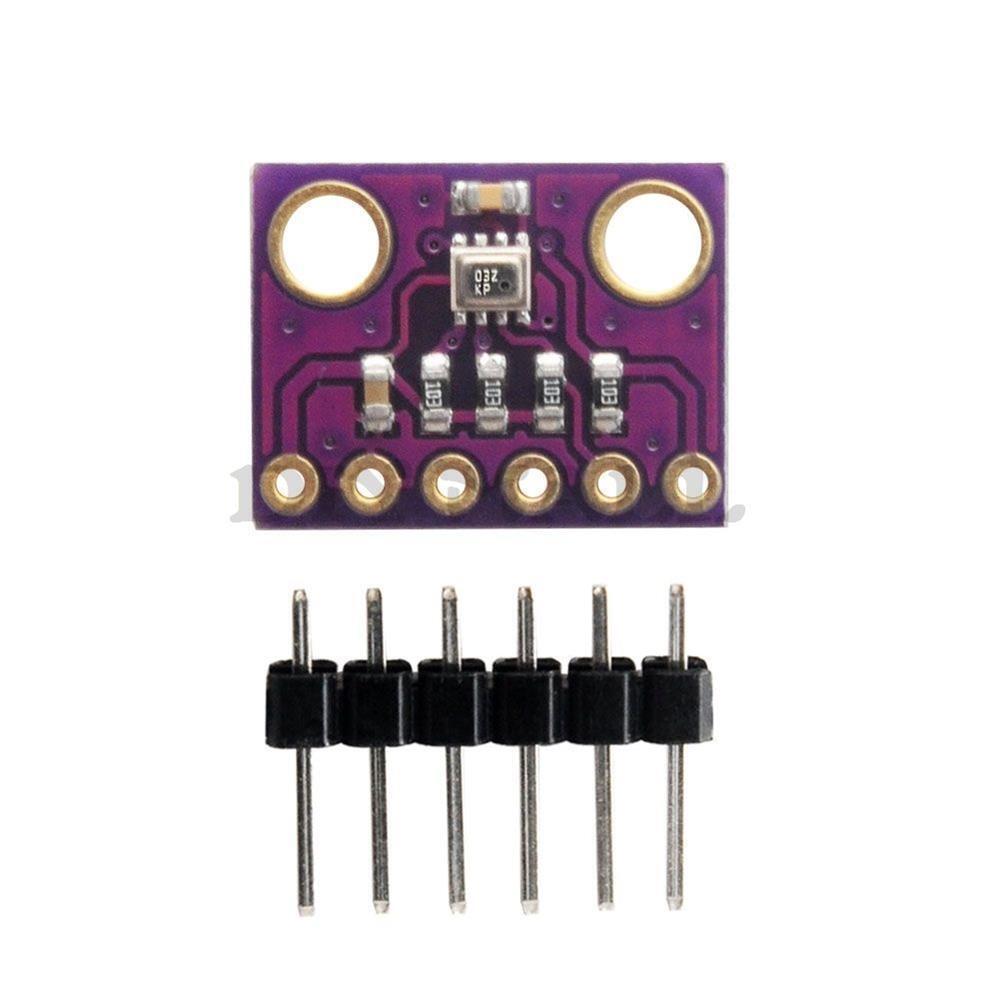Winston
Lorenzo von Matterhorn
- Joined
- Jan 31, 2009
- Messages
- 9,560
- Reaction score
- 1,748
I was considering using the usual, cheap 915MHz LoRa modules just for RDF with altitude telemetry and wondered if an RF signal time-of-flight capability using them to allow crude ranging had been managed by anyone. Lo and behold I then discovered the SX1280 LoRa transceiver chip which originated around 2016, but which is not talked about at all in the hobbyist realms judging from what I haven't found. It's a chip specifically designed with a "bent pipe" ranging capability and an even more convenient for ground station RDF gain antenna compactness 2.4GHZ operating frequency.
I then found an Elektor magazine article actually on the topic of ranging AND RDF using an SX1280 module, an article which is linked to below. The hardware made to use it as described in the article has a far more powerful external processor than needed - a very cheap ($5) 3.3V Arduino Pro Mini would probably do and would have the advantage of having most of the electronics on an already built PCB allowing a simple motherboard to interconnect the Arduino Pro Mini with the SX1280 module:
https://www.dlpdesign.com/images/findit.pdf
With one SX1280 module/Arduino pair at each end of the link with a barometric sensor module in the flight hardware all mounted on their individual motherboards, the ground hardware having an altitude/range readout on a cheap, daylight readable LCD (like a $5 Nokia 5110 LCD module) and a variable frequency metal detector-like tone for RDF with all hand held ground hardware contained in a very small and lightweight 3D printed custom case with a 3D printed gain antenna attached (Customizable Helix (Helical) Antenna Frame and Winding Template - https://www.thingiverse.com/thing:2497461), this sort of device could be useful as an all-in-one, handheld, standalone "loss of track" prevention and RDF (prior to actual touchdown depending upon distance, terrain, and presence of attentuators like bushes and trees) system which doesn't require access to cellular system data links to provide GPS mapping capability.
If done as a kit this could be very cheap and since it uses modules with the vast majority of the needed components already soldered in place it would also be very easy to assemble and more likely to work afterwards. If this sounds useful, I welcome anyone to work on this or something even better as I might get around to it only some time within this century.
The really basic basics of the SX1280:
https://www.scivision.co/lora-wifi-radar-ranging/
Cheap SX1280 modules (<$8.00 each shipped):
https://rover.ebay.com/rover/1/711-...0001&campid=5338413729&icep_item=192394891752
SX1280 web page:
Semtech SX1280
Long range, low power 2.4 GHz Wireless RF Transceiver with ranging capability
https://www.semtech.com/products/wireless-rf/24-ghz-transceivers/SX1280
Features
Long Range 2.4 GHz transceiver
High sensitivity, down to -132 dBm
+12.5 dBm, High efficiency PA
Low energy consumption, On-chip DC-DC
LoRa, FLRC, (G)FSK supported modulations
Programmable bit rate
Excellent blocking immunity
Ranging Engine, Time-of-flight function
BLE PHY layer compatibility
Low system cost
Applications
Home automation & appliances
Tracking applications
Wearables & sports/fitness sensors
Radio-controlled toys & drones
Smart watches & beacons
Healthcare
Datasheets
SX1280/SX1281 Product Datasheet
https://www.semtech.com/uploads/documents/DS_SX1280-1_V2.2.pdf
Application Notes
Bluetooth Immunity of LoRa at 2.4 GHz
https://www.semtech.com/uploads/documents/AN1200.44_Bluetooth_Immunity_of_LoRa_at_2.4_GHz_V1.0.pdf
How to Perform Ranging Tests with the SX1280 Development Kit [devkit is massively overpriced and not needed - W]
https://www.semtech.com/uploads/documents/AN1200.31_SX1280_EVK_Ranging_How_To_V1.0.pdf
From that app note: "SX1280 can provide reliable ranging results in excess of 7 km."
Introduction to Ranging for SX1280
https://www.semtech.com/uploads/documents/introduction_to_ranging_sx1280.pdf
Using the SX1280/SX1281 in Low Power Applications
https://www.semtech.com/uploads/doc...the_SX1280_in_Low_Power_Applications_V1.0.pdf
Wi-Fi Immunity of LoRa at 2.4 GHz
https://www.semtech.com/uploads/documents/WiFi_Immunity_App_Notes.pdf
The major components:





I then found an Elektor magazine article actually on the topic of ranging AND RDF using an SX1280 module, an article which is linked to below. The hardware made to use it as described in the article has a far more powerful external processor than needed - a very cheap ($5) 3.3V Arduino Pro Mini would probably do and would have the advantage of having most of the electronics on an already built PCB allowing a simple motherboard to interconnect the Arduino Pro Mini with the SX1280 module:
https://www.dlpdesign.com/images/findit.pdf
With one SX1280 module/Arduino pair at each end of the link with a barometric sensor module in the flight hardware all mounted on their individual motherboards, the ground hardware having an altitude/range readout on a cheap, daylight readable LCD (like a $5 Nokia 5110 LCD module) and a variable frequency metal detector-like tone for RDF with all hand held ground hardware contained in a very small and lightweight 3D printed custom case with a 3D printed gain antenna attached (Customizable Helix (Helical) Antenna Frame and Winding Template - https://www.thingiverse.com/thing:2497461), this sort of device could be useful as an all-in-one, handheld, standalone "loss of track" prevention and RDF (prior to actual touchdown depending upon distance, terrain, and presence of attentuators like bushes and trees) system which doesn't require access to cellular system data links to provide GPS mapping capability.
If done as a kit this could be very cheap and since it uses modules with the vast majority of the needed components already soldered in place it would also be very easy to assemble and more likely to work afterwards. If this sounds useful, I welcome anyone to work on this or something even better as I might get around to it only some time within this century.
The really basic basics of the SX1280:
https://www.scivision.co/lora-wifi-radar-ranging/
Cheap SX1280 modules (<$8.00 each shipped):
https://rover.ebay.com/rover/1/711-...0001&campid=5338413729&icep_item=192394891752
SX1280 web page:
Semtech SX1280
Long range, low power 2.4 GHz Wireless RF Transceiver with ranging capability
https://www.semtech.com/products/wireless-rf/24-ghz-transceivers/SX1280
Features
Long Range 2.4 GHz transceiver
High sensitivity, down to -132 dBm
+12.5 dBm, High efficiency PA
Low energy consumption, On-chip DC-DC
LoRa, FLRC, (G)FSK supported modulations
Programmable bit rate
Excellent blocking immunity
Ranging Engine, Time-of-flight function
BLE PHY layer compatibility
Low system cost
Applications
Home automation & appliances
Tracking applications
Wearables & sports/fitness sensors
Radio-controlled toys & drones
Smart watches & beacons
Healthcare
Datasheets
SX1280/SX1281 Product Datasheet
https://www.semtech.com/uploads/documents/DS_SX1280-1_V2.2.pdf
Application Notes
Bluetooth Immunity of LoRa at 2.4 GHz
https://www.semtech.com/uploads/documents/AN1200.44_Bluetooth_Immunity_of_LoRa_at_2.4_GHz_V1.0.pdf
How to Perform Ranging Tests with the SX1280 Development Kit [devkit is massively overpriced and not needed - W]
https://www.semtech.com/uploads/documents/AN1200.31_SX1280_EVK_Ranging_How_To_V1.0.pdf
From that app note: "SX1280 can provide reliable ranging results in excess of 7 km."
Introduction to Ranging for SX1280
https://www.semtech.com/uploads/documents/introduction_to_ranging_sx1280.pdf
Using the SX1280/SX1281 in Low Power Applications
https://www.semtech.com/uploads/doc...the_SX1280_in_Low_Power_Applications_V1.0.pdf
Wi-Fi Immunity of LoRa at 2.4 GHz
https://www.semtech.com/uploads/documents/WiFi_Immunity_App_Notes.pdf
The major components:









